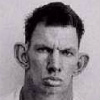Haven't fished this much but there was some interest in this fly awhile ago, someone wanted a step by step.
Thread some beads on some Mono. I like Mason's hard nylon for this. 12lb test or so. I usually put a lighter color or shinier bead in the middle. I burn the end of the mono so the beads don't slip off.
Add some knotsense or your favorite goop to cover the beads
I rotate the vice to even it out and then cure it. I don't worry about a top coat now, the tacky stuff will come off as the fly is tied as it's being touched and stuff.
Put a bead on your hook, I'm using a TMC2487 or something like that here in 14 or so, put some lead wraps on or you can leave them off.
Start my thread, using tan Gordon Griffith's 14/0 here.
Before tying in the abdomen, I put a little underbody of ginger Z-lon down and flair it out, then tie in the body. If you didn't use lead, measure out the length of the mono to go the length of the shank right up to the eye. This will secure the bead as well, just push the mono into the bead until it's snug and tie in.
Tie in a brown z-lon over wing and I put in some greyish brown cdc dub. I use a split thread technique for the dubbing.
Next, I use a magic tool with partridge and peacock ice dub (small amount). I forgot to add in two strands of crystal flash, but you can do that here as well. I split the thread and inserted the patridge hackle and dubbing.
Spin it up tight. I use a nor-vise automatic bobbin, it's spins very well as it's compact, centered and has a fair amount of weight.
Wrap on your hackle and dubbing, sweeping back the partridge as you go.
Next, I tie in brown ostrich herl, wrap it forward, tie off, whip finish behind the bead and done.
Come back and top coat the body with hard as nails or your topcoat of choice. If you want though, before tying the fly, you can wipe it clean with alcohol and add the topcoat before tying the rest of the fly, but I found that it was pretty much ready to go at the end of tying w/o having to wipe it down.














 Reply With Quote
Reply With Quote







Bookmarks